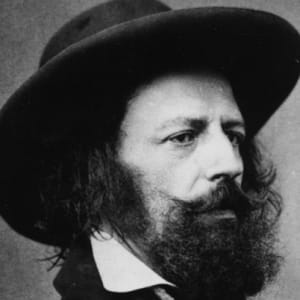- EVOLUTION OF A POEM
- THE CREATIVE PROCESS UNMASKED
- GOOD AND GREAT ARTISTS
- THE CREATIVE PROCESS UNMASKED: Part 4, Rest Time
- THE CREATIVE PROCESS, PART 5: How Confinement Can Expand Creative Expression
- CREATIVE SPARKS
- PERSPECTIVE
- WHEN “I” DOESN’T MEAN “ME”: Lesson #1 From My Latest Poem
- ART FROM REAL LIFE
- ARTIST AS WITNESS
- NOW THAT’S A POEM: Where Inspiration Comes From
Artistic imitation is something that many creatives have recognized is an important aspect of the creative process. Steve Jobs, for example, was apparently fond of saying,
Good artists copy; great artists steal.

Known for, among other famous words:
“‘Tis better to have loved and lost/
Than never to have loved at all.”
This is a quote he attributed to Picasso. Actually, an English journalist named W.H. Davenport Adams said it much better in an 1892 article in “The Gentleman’s Magazine.” He was talking about the work of Alfred Lord Tennyson when he wrote:
Great poets imitate and improve, whereas small ones steal and spoil.
I had the opportunity to practice artistic imitation during National Poetry Month this past April. In a workshop led by poet and writing coach Sage Cohen, participants wrote a poem a day for 30 days. One of the exercises she had us do was to write a poem inspired by another poet, in this case Mary Oliver’s “The Summer Day.” The lesson had to do with engaging the reader directly, as Oliver does with a question at the end of her poem. It also had to do with writing description at a fine, even micro-level of detail, something Oliver mastered in her career.
Coincidentally, a dear friend had just sent me a birthday greeting in the form of time lapse photography that showed the opening of different types of flowers. I absolutely love time lapse photography of flowers! Watching the video over and over, I delighted in the life of blossoms as we can never experience it with the naked eye.
So I got the idea to use that time lapse for the workshop exercise: I would describe the opening of a peony, in fine detail. And I would – what? Steal? Imitate? Improve? – Oliver’s question to the reader at the end of the poem, because I absolutely loved that question.
If I could summarize the process, this is how I’d describe creating my poem, “The Peony”:

- Something caught my attention, in this case the time-lapse photography of opening blooms. For sheer enjoyment, I spent some time with it, took it in.
- Paying closer attention to the images, I paused the video to observe the details of the flowers opening. I started jotting down some descriptive words.
- I studied Mary Oliver’s poem for word choices, ideas she introduces, the pace of the poem. This was more a process of absorption rather than a technical analysis. I got a “feel” for her poem, since I’d decided to use it as a launching point for mine.
- I drafted my poem (several times!) and found a suitable photo from my garden collection, which helped in the refinement of the words.
This list implies that creating is a linear process, which it is not! It’s more like a spiral, twisting around itself many times.
Once the poem was drafted, one of the members of my writer’s group pointed out to me that my question to the reader is not an exact copy of Oliver’s question. I had not realized that until she mentioned it! So also in the process of creating, it seems that some kind of alchemy re-molded Oliver’s words into my question, formed my way.
Maybe ‘alchemy’ is a better word than ‘imitation’ for what really happens. An artist absorbs what she thinks is fabulous from another artist, then molds something new in her own way.
What do you think about this? Is there really “nothing new under the sun”? Is this “artistic imitation” a legitimate aspect of the creative process, or thinly-disguised thievery? Here again are the two poems; if you like you can compare the two and see how one inspired the other. “The Summer Day” by Mary Oliver. My poem, “The Peony.”
As always, I’d love to hear your thoughts. I hope you found something new to think about, through this latest peek “behind the scenes” into the creative process!
Lee Ann
Lee Ann, since reading this a couple of weeks ago, I have found myself recognizing this “imitation” and I would also say “thievery”, everywhere! Seems the creative process doesn’t just stop at being artistically creative, as I can see how things evolve in the business world as well. We see something we need and like but some creative changes would make it something more appealing to us. I like “stealing” things, gives us a baseline! On the artistic side, a poet, I am not! I have however, been dabbling in watercolour and am very great full for being able to see other artistic impressions of a flower, and am able (with some success) to make it so it’s pleasing to me. Then I call it “my own”. Thanks, for giving me something new to think about!
Thanks so much for this, Mary! You are always thinking in new ways. And I’m looking forward to seeing some watercolours!